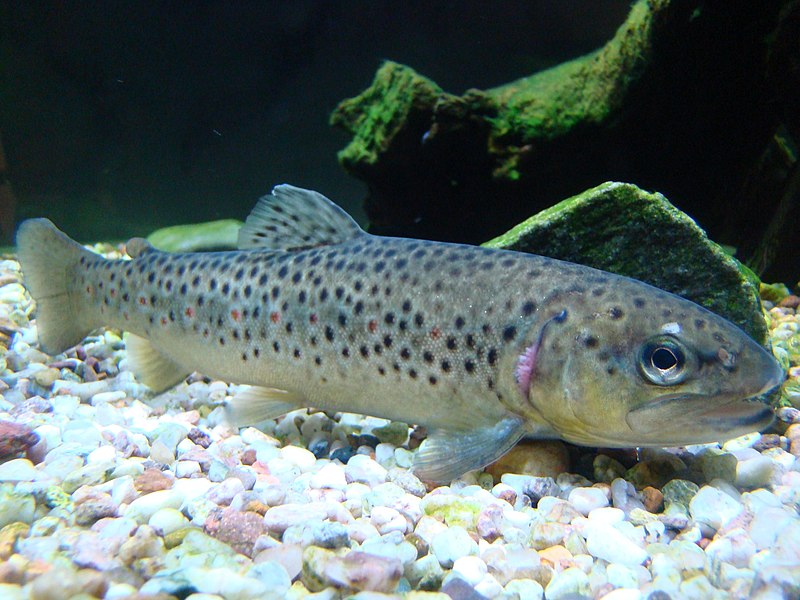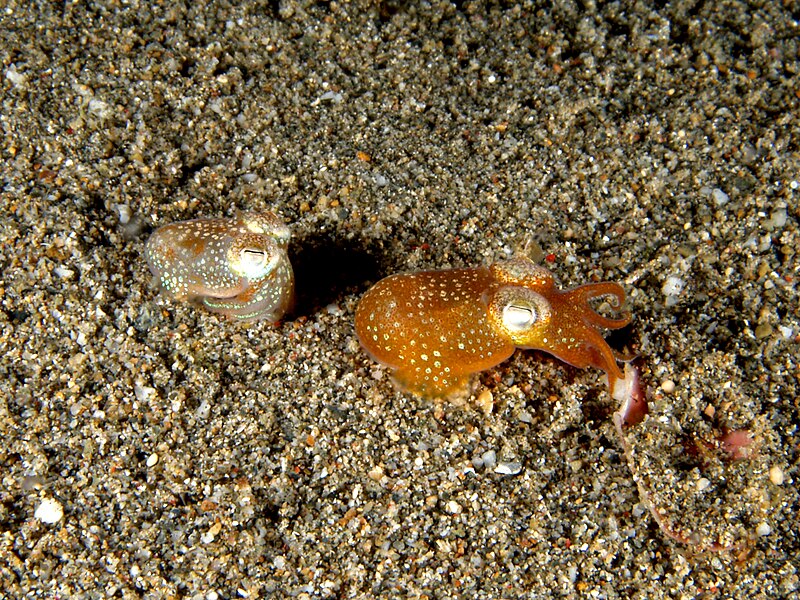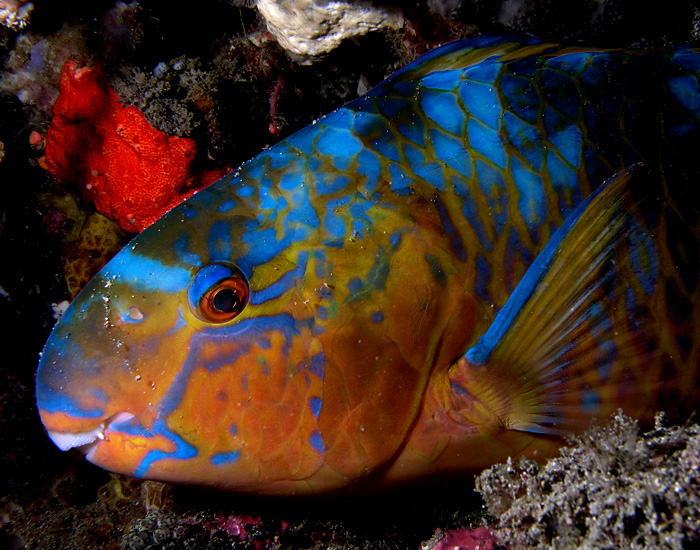 Live rock has always been a controversial topic within the aquarium hobby. Rock harvested from oceanic reefs has been a staple for reef enthusiasts for many years. It’s hard to replicate the look of a coral reef in a closed environment without the use of natural live rock. The problem is, it takes a lot longer for the live rock beds to recover than it does for dealers to harvest it. Removing natural rock reduces the amount of locations for new corals to settle and develop, so collection threatens the existing coral reefs as corals have less suitable area to colonize. Read More »
Live rock has always been a controversial topic within the aquarium hobby. Rock harvested from oceanic reefs has been a staple for reef enthusiasts for many years. It’s hard to replicate the look of a coral reef in a closed environment without the use of natural live rock. The problem is, it takes a lot longer for the live rock beds to recover than it does for dealers to harvest it. Removing natural rock reduces the amount of locations for new corals to settle and develop, so collection threatens the existing coral reefs as corals have less suitable area to colonize. Read More »
Category Archives: Aquarium Livestock
Feed SubscriptionStudy Reveals that Fishes Have Distinct Personalities – Research Update

Aquarium Fish with Personality
Aquarists learn early-on that individual fish react very quickly to changes in their environment, and that not all do so in the same manner. Even the universal tendency of aquarium fishes to move towards the glass in anticipation of food when someone passes by is not usually shared by every tank inhabitant (this is actually a quite interesting bit of learned behavior – after all, fishes that rushed out to “greet” large beasts would not last long in the wild!). Read More »
How to Set Up A Quarantine Tank
Every aquarist has a horror story about something terrible happening to their tank after adding something new. An outbreak of ich, a giant, scary bristleworm, or some other unwelcome hitchhiker that created panic and a scramble to get the aquarium back to its former condition. To avoid or prevent such situations we can’t recommend enough the assembly of a quarantine tank. For a few bucks and an hour of your time the isolation tank will likely save you the stress and anger of common issues that come with adding new stock for the duration of your aquarium keeping days.
Quarantine tanks, or “hospital tanks”, are a highly beneficial and typically underestimated part of keeping your fish healthy and happy. A good quarantine system will help you monitor the health of new fish before adding them to your aquarium, minimizing the spread of disease and ensuring that the fish is eating well. The tank is also highly useful to treat sick or injured fish, a smaller volume of water means less medication, and the smaller tank helps you monitor the recovery. Even the simplest quarantine tank will pay for itself in money saved from reduced use of medications and fewer fish losses. Whether you’re just getting started or you’re an aquarium veteran, this piece of equipment should be considered as essential as a good filter.
Materials
Quarantine tanks only require a few essential pieces of equipment. All you need for a successful tank are the following:
Tank – ten to twenty gallons is usually sufficient, depending on the size fish you plan on keeping
Filter – anything from a simple sponge filter to a small power filter
Heater – essential to tropical and saltwater systems
Simple shelter – not completely necessary, but will reduce stress by giving the fish a place to hide and feel more secure. Think PVC tube, old driftwood or an old plant or ornament.
You may also want to keep a small air pump and airstone on hand to apply during periods of medication.
Quarantine to Suit Your Needs and the Needs of Your Fish

Permanent Systems
Permanent systems remain set up and established all the time, whether a fish is being medicated or not. This allows for a stable environment closer to that of the main aquarium, but requires space and time for it to be maintained. This type of quarantine tank should be equipped with a small power or canister filter, and water conditions kept similar to the main tank. Ideally, the filter should allow for easy removal of the chemical media (carbon, zeolite, etc) while medicating. The tank should be maintained regularly as well. Frequent water changes and algae maintenance after cycling will keep the tank healthy and ready for new arrivals or ailing fish. Hardy fish like danios or plecos (for freshwater) or mollies and damsels (for saltwater) will keep the tank cycled and stable between uses. When adding new fish to these systems, the fish should be slowly acclimated to the new tank, as water conditions will be different from their previous tank.
Emergency Systems
Not everyone has the space to keep a second tank set-up all the time. Keeping the necessary equipment for setting up a hospital tank (even if it is stored in the basement or garage) will help you be prepared if you have a problem.
The emergency quarantine tank is one that is set-up as needed. While not as stable as a system that remains established, these systems are good for isolating and medicating sick fish, or as a temporary home for a new or displaced fish. Since these tanks are set up only as needed, a power filter is preferred, but not necessary. A simple sponge filter attached to an air pump is sufficient. The tank should be filled with water from the existing aquarium to give the fish a somewhat more stable environment. For this reason, a long acclimation is often not needed. These tanks also do not require starter fish to maintain the nitrogen cycle because they are cleaned out after each use. When cleaning, it is important to remember not to use harsh chemicals like Windex, or other cleaners. If disinfection is necessary, a very diluted bleach solution can be used. Just make sure to rinse the tank thoroughly after using the bleach water, and allow the tank to dry thoroughly before using it again.
Quarantine systems may seem like an unneccessary hassle or a waste of money, but anyone who has experienced an outbreak or any other major issue will tell you it’s worth your time.
Please let me know if you have any questions in the comments section below.
Thanks, Eileen
Recent Research – Some Squid Use Glowing Bacteria as Camouflage
 It’s no secret that cephalopods have amazing skill at camouflaging themselves to avoid predation. You may have seen the unique tactics of the mimic octopus in recent years, or you may have been lucky enough to see a squid or cuttlefish in action, changing color and skin texture with lightning-quick speed. Their abilities are intriguing to us and necessary for their survival in the big ocean blue. Read More »
It’s no secret that cephalopods have amazing skill at camouflaging themselves to avoid predation. You may have seen the unique tactics of the mimic octopus in recent years, or you may have been lucky enough to see a squid or cuttlefish in action, changing color and skin texture with lightning-quick speed. Their abilities are intriguing to us and necessary for their survival in the big ocean blue. Read More »
Fish News – Mucous Covering Protects Sleeping Parrotfishes from Parasites
 Hello, Frank Indiviglio here. Marine aquarists and divers are well-aware of the mucous “sleeping bags” produced by Parrotfishes and certain Wrasses each night. It was assumed that these cocoon-like structures discouraged eels, crabs and other nocturnal predators – perhaps the mucous hid the sleeper’s scent, or was bad-tasting or toxic. A study at Australia’s Queensland University, however, has revealed that the mucous cocoon’s main purpose may be to deter external blood-sucking parasites – the first known example of such a phenomenon.
Hello, Frank Indiviglio here. Marine aquarists and divers are well-aware of the mucous “sleeping bags” produced by Parrotfishes and certain Wrasses each night. It was assumed that these cocoon-like structures discouraged eels, crabs and other nocturnal predators – perhaps the mucous hid the sleeper’s scent, or was bad-tasting or toxic. A study at Australia’s Queensland University, however, has revealed that the mucous cocoon’s main purpose may be to deter external blood-sucking parasites – the first known example of such a phenomenon.
A Good Reason to Hide
Writing in the November 17, 2010 issue of the journal Royal Society Biology Letters, researchers have established that sleeping Parrotfishes suffer numerous parasite attacks when deprived of their mucous cocoons (I couldn’t determine how they removed the cocoons without waking the fish!). Parrotfishes with intact cocoons sleep peacefully through the night, and were rarely bitten. Read More »
 That Fish Blog – Aquarium Advice and Information
That Fish Blog – Aquarium Advice and Information
